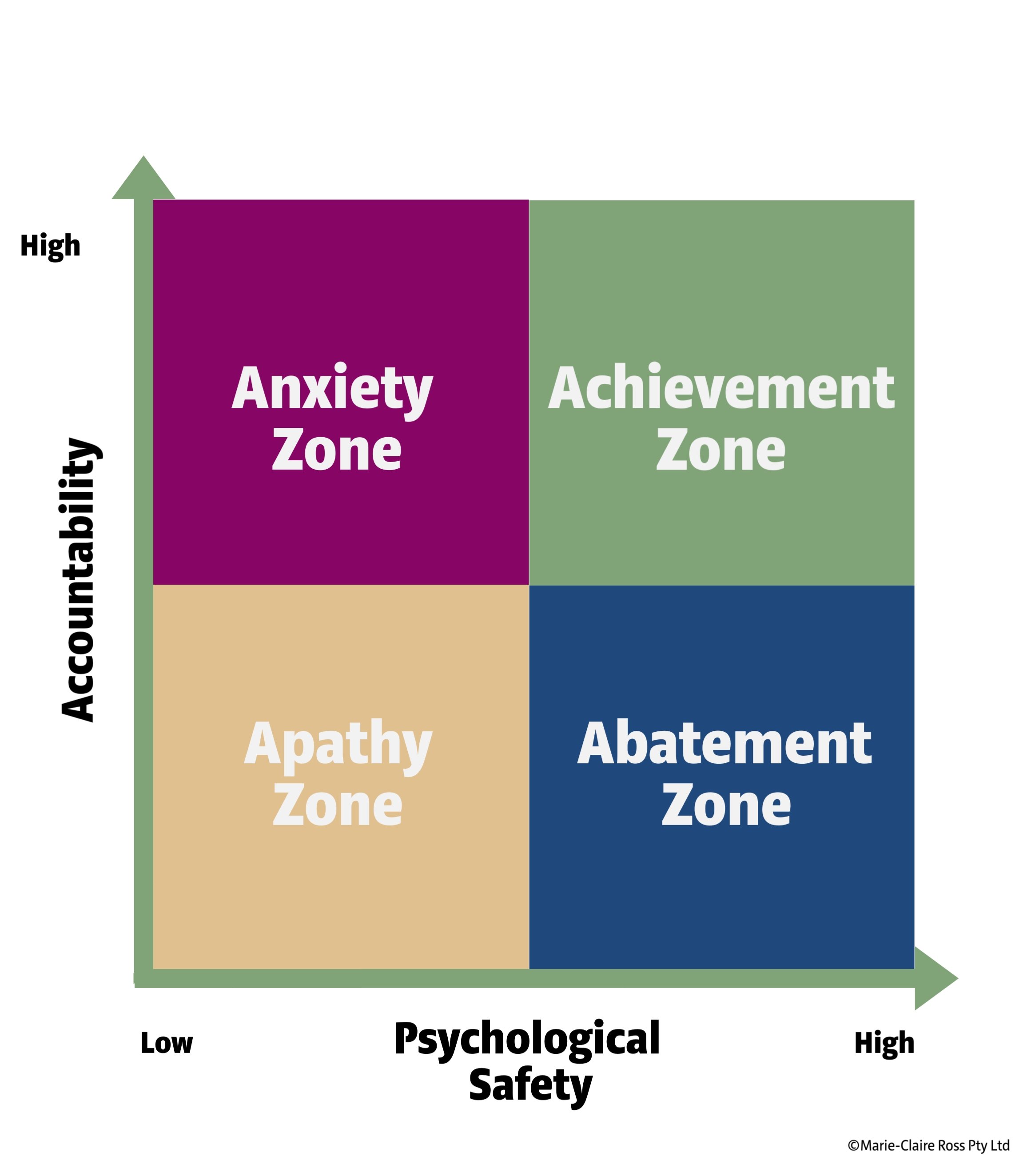
A few years ago, I was sitting in a large auditorium listening to the wonderful, Jim Collins, who studied what makes great companies tick for twenty-five years.
Dealing with uncertainty is at an all-time high. According to the Global Policy Uncertainty Index, concern about the impact of policy decisions on business and markets hit its highest point ever in January, exceeding the previous peak in May 2020 during the height of COVID.
Give the threat of tariffs, cost of living pressures, political uncertainty and big weather events, it's safe to say that a lot of people are feeling stressed out. Then, when you throw in personal issues such as dealing with grief, family problems and health or relationship issues - a lot of people are merely surviving.
So what can you do to manage uncertainty in the workplace?
It's a common saying that if an airplane is in trouble, you should secure your own oxygen mask before assisting others.
At this time, your people are looking to your for guidance. They want to know that you are feeling okay and they will calibrate their emotions to your emotional set point.
Now is the time to prioritise activities that fill you. Whether that be going for an early morning walk, spending time on the weekend immersed in your favourite hobby or having quality time with friends and family.
Locus of Control Theory is the belief about whether life events are due to own actions (internal) or due to outside forces beyond your control (external). By concentrating on what we can manage, we lower our stress levels and gain a sense of control. When going through challenges, ask yourself or your team, "What part of this is under my/our control?"
You will never be able to predict the future, but it is your responsibility to anchor your team in a consistent purpose and strategy. Pursuing every new trend or having a knee-jerk reaction to external chaos can hinder your ability to execute your mission.
Now is the time, to double down on your key strengths and ignore the temptation to fall into a negative spiral or get distracted. Staying calm during this time and believing in possibilities, will allow you to stay ahead of trends and spot opportunities before others.
If leadership is unclear, unresponsive, or inequitable, your people will start to think the worst.
Now is the time to communicate more frequently. Otherwise, people will make up their own stories about what is going on, which will always be ten times worse than reality.
Make sure you don't sugar coat events and let people know when you don't know what's going to happen. Show people that you are okay with not knowing.
Of course, communication involves saying the same message repeatedly in different ways and formats. Your employees all have different styles of processing information. Keep adapting your communication to the needs of each person in your team.
Your employees are more likely to follow you when you admit that you can't predict the future, but you believe that together as a team, you have the skills, capabilities and mindset to figure it out.
And if there is no clarity from above?
Then, take the lead and make a decision that you believe is the best way to go forward with your team. Do not let a lack of direction from above - stop you from taking charge. It's better to keep going and adapt than sit still. Otherwise, it will only create more angst in your team.
During uncertain times, we frequently discuss resilience, yet we often neglect the human toll of what we demand from employees to persevere.
Leaders have a responsibility to create a culture of psychological safety and well-being through open dialogue, manager training, and accessible mental health support.
Champion healthy behaviours in the workplace and shut down any sort of interactions that make people feel unsafe. This includes people who speak over their colleagues in meetings or when employees refuse to celebrate their colleague's success.
Leadership isn’t just about hitting targets—it’s about consistency, mindset, and the ability to adapt under pressure. And being approachable.
This isn't the time to hide away. Your visibility and connection is needed more than ever. After all, according to a PwC study, people are inspired by the meaning in their work, community, and impact. Leading with strong interpersonal skills that can be hard to measure become more important such as building trust, creating a sense of belonging and a healthy culture.
Work on building connection with your team. Encourage regular in-person events, have meaningful meetings, ramp up the frequency of one on ones and do a company offsite.
It is powerful when we come together and have fun. Laughing in the office is far more enjoyable than sitting at your desk stressing and straining over deadlines.
Research has found that leaders who promote positive energy have a significant impact on innovation, organisational performance and employee satisfaction. This requires leaders who prioritise being positive and exuding an upbeat energy in order to maintain enthusiasm in their team, even when things get difficult.
Inspired optimism requires being willing to address both failure and success, rather than the typical leadership approach of favouring one over the other. Consequently, it generates high levels of psychological safety, because errors and concerns are openly discussed, ensuring the team can course correct and avert a potential crisis.
Reframing a crisis to one in which people can see the opportunity for growth and learning becomes important.
The adage "Never let a crisis go to waste" becomes important here. Listen to your team, stay curious - seek different perspectives and observe changes in the market.
Helping your team see a positive future that is better than the past can really bring you together to find solutions. Great teams are made during tough times.
When people stress out they want to know they are safe to express their emotions without negative repercussions.
Research indicates that when a group of people experiences the same emotion together, the collective emotion is often more powerful than when an individual feels that emotion alone. Emotions - good or bad - are contagious.
To avoid negative emotions from taking over your team, it's important to call out emotions and normalise them in the workplace.
Conduct emotional check-ins with your team to see how to measure how they are tracking. This could be as simple as asking everyone the question "On a scale of 1 to 10, how are you feeling this week about your workload?" Anyone that is three or below, you organise to catch up with for a 121 and organise fellow colleagues to also reach out to them.
When dealing with workplace uncertainty, leaders can implement various strategies.
First, it's crucial to look after oneself, as employees often calibrate their emotions based on their leader's emotional state. Prioritising self-care activities can help maintain a positive outlook.
Second, focusing on what can be controlled helps reduce stress and provides a sense of stability. Leaders should anchor their teams in a consistent purpose and strategy, avoiding knee-jerk reactions to external chaos.
Clear and frequent communication is essential to prevent misinformation and reassure employees. Fostering psychological safety through open dialogue and mental health support is vital, as is maintaining strong connections with employees to build trust and a sense of belonging. Leading with inspired optimism and allowing for emotional expression can further enhance team resilience and performance during uncertain times.

A few years ago, I was sitting in a large auditorium listening to the wonderful, Jim Collins, who studied what makes great companies tick for twenty-five years.

One of the regular things a leader will ask me for advice on is how to get one of their team members in alignment. This is particularly true for a leader leading a newly...